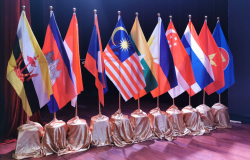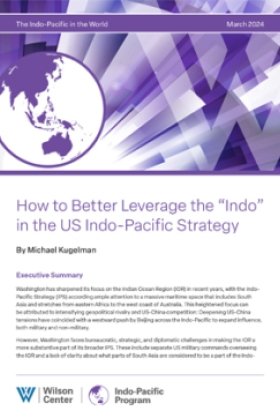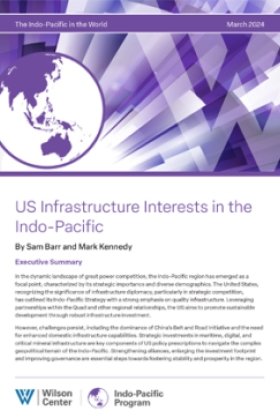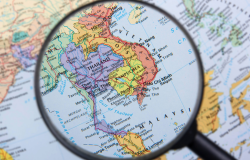"Retreat of the Yen? The Future of Japanese Overseas Development Assistance"
Overview
By Amy McCreedy
Asia Program Associate
Saori Katada, Professor of International Relations, University of Southern California
Shinichi Kitajima, Minister in Charge of Economic Affairs, Embassy of Japan
Shinji Takagi, Professor of Economics, Osaka University
John Wilkinson, Deputy Assistant Administrator, Bureau for Asia and the Near East, US Agency for International Development (Commentator)
For Japan, overseas development assistance (ODA) is central to its identity as a world power. Constrained by a pacifist constitution, excluded from the United Nations Security Council, and still distrusted by Asian countries that suffered Japanese aggression during World War II, Japan has found it difficult to assert itself on the world stage on a level commensurate with its economic might. ODA has thus become Tokyo's main foreign policy tool, and since 1991 Japan has been the world largest provider of development aid.
But many Japanese—including several political leaders and a record number of ordinary citizens—now favor cutting ODA to help rein in Japan's huge fiscal deficit. Fiscal 2001 will see a 3 percent reduction, possibly to be followed by cuts of 10-15 percent in future years. Some politicians favor slashing ODA as much as 30 percent. What does this trend mean for Japanese influence in Asia and the world?
One important point made by all of the panelists is that quantity is not the only important criterion of Japanese aid. Indeed, while the overall amount will decline, the quality—measured in terms of efficiency, transparency and effectiveness—may well increase. In order to get "more bang for the yen," a major rethinking of the ODA strategy is necessary, according to Shinji Takagi, an economics professor from Osaka University, currently visiting at Yale University. Japanese ODA is still too wasteful and heavily biased toward hard infrastructure rather than social sector development. Moreover, Japan needs to work in closer partnership with recipient societies and other donor countries. If the cut in the budget will draw people's attention to how the money is being used, it could well be a "blessing in disguise."
According to Takagi, Japan must take an especially hard look at its aid program to China (the largest recipient of Japanese ODA, followed by Indonesia and India). Many Japanese feel they are indirectly funding Chinese militarization—over the past 12 years, China's defense expenditures have risen to 13 percent of China's national budget. Takagi acknowledges that Japanese aid is important to encourage China's integration into the market economy. But he feels that Japan should be stricter in imposing conditions. For example, Japan should require China to improve transparency in its military spending, and to work harder at publicizing Japanese aid. At present, Japanese aid is "faceless"—unknown and unappreciated by ordinary Chinese people.
Saori Katada, professor of international relations at the University of Southern California, agreed with much of Tagaki's comments, and added an additional criticism: Japanese ODA is still too mercantilistic and geared toward national interest. Tied loans (involving the participation of Japanese firms) are increasing again, as a result of pressure on the government from the Japanese private sector during economic hard times. Tied aid brings money back to Japan, but hurts the country's reputation as a generous giver. The Japanese policy of providing aid "on request" is also a problem: those who need aid the most are often not savvy enough to go through the bureaucratic process of requesting it. Those who do request it are often being nudged along by Japanese multinationals, who sense an infrastructure-building opportunity.
The situation is a complex one, however, and the news is not all bad. According to Katada, Japanese aid is "schizophrenic" in that a negative trend—mercantilism—exists alongside a fresh humanitarian approach that bodes well for the future. The mercantilism is perhaps the final convulsion of the old-fashioned, rigid aid establishment, while the shift toward humanitarian aid is the real shift, which will drive Japanese ODA for decades to come. The new strategy will emphasize poverty alleviation, social development, and human resources development. What has caused the current state of schizophrenia? According to Katada, it largely can be attributed to bureaucratic infighting between those ministries that have links to the private sector (Ministry of Finance, Ministry of Economy, Trade and Industry) and those that do not (Ministry of Foreign Affairs).
Shinichi Kitajima, Minister of Economic Affairs at the Japanese embassy, began by pointing out that Japan will remain far and away the world's largest donor in the near future, in spite of budget reductions. He maintained that any criticism should take into account Japan's economic situation. For example, Japan—in spite of its economic woes—gave 10 times more than did the booming United States to help Asian countries recover from the 1997 financial crisis. In addition to being number one in terms of overall aid, Japan is seventh in terms of per-capita ODA burden and seventh in terms of ODA/GNP ratio. Kitajima emphasized that, although Japan's aid policy is often criticized for being self-serving, most of the loans remain untied.
Kitajima went on to describe recent initiatives in Japanese ODA, which include 1) promoting information technology, 2) slowing the spread of infectious diseases, and 3) increasing assistance to Africa. Other goals include: lending more selectively, establishing fuller relationships ("partnerships") with recipients, improving accountability, and focusing on poverty alleviation. Meanwhile, the Japanese government must adjust to a new environment in which NGOs demand a greater role than in the past, and deal with an increasingly skeptical and economically strapped public. In regard to China, the Japanese aid establishment is likely to place greater emphasis on environmental protection, social development of inland regions, human resource development, and capacity building.
John Wilkinson of USAID served as commentator. He agreed with Kitajima that the United States should spend more on aid, but pointed out that Japan can afford a large ODA budget because it spends relatively little on security. He also commented that while Japan is to be commended for helping crisis-ridden Asia in the late 90s, the motivation was not entirely altruistic—the Japanese economy would have taken a tremendous hit otherwise.
Wilkinson pointed out some areas in which the United States and Japan follow different strategies in regard to aid. The Japanese tend to participate in multilateral forums, while the U.S. follows a more bilateral approach. Also, Japan gives far fewer grants than do other donor countries, emphasizing loans instead. ("Loans are great until payback time.") But in spite of disagreements, Wilkinson stressed that the two countries work extremely well together on aid issues, exchanging personnel and information in such areas as strategic planning. He expressed hope that the United States can help Japan work better with NGOs.
In general, all the panelists agreed that Japanese ODA is gradually shifting from a preoccupation with national interest to a more global and people-oriented approach. Japan changes slowly; there will probably be neither drastic cuts nor dramatic reorientations in its ODA policy. But gradual improvement in transparency and increasing responsiveness to the needs of developing countries are likely to be the happy results of public skepticism and a tightening budget.
Hosted By

Indo-Pacific Program
The Indo-Pacific Program promotes policy debate and intellectual discussions on US interests in the Asia-Pacific as well as political, economic, security, and social issues relating to the world’s most populous and economically dynamic region. Read more
Thank you for your interest in this event. Please send any feedback or questions to our Events staff.










